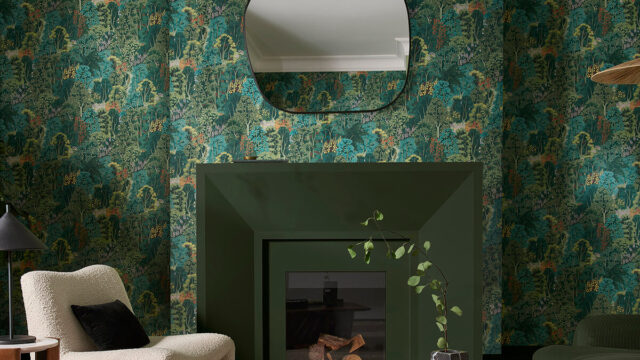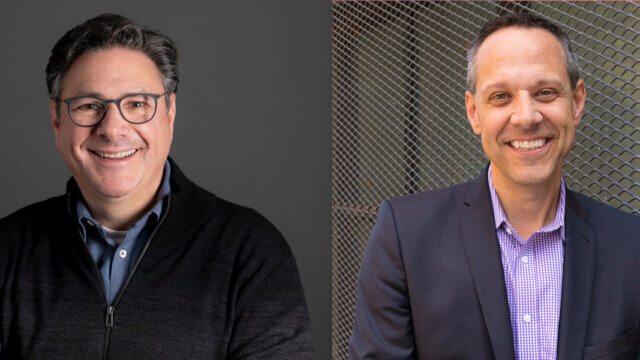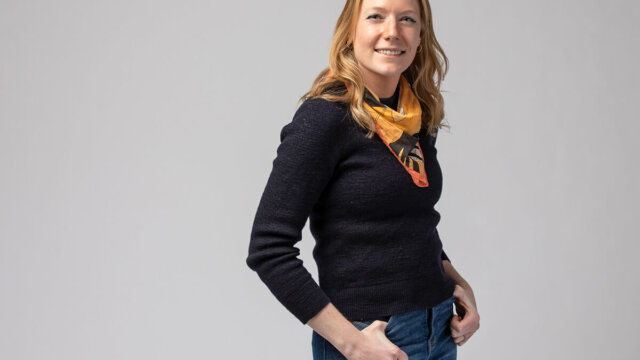Ambius, an interior landscaping company, released its proprietary trends report, a first for the biophilic category, which highlights the top six trends in biophilic design that have staying power. These architectural applications are poised to change the way people work and operate within the built environment. Part of the larger wellness movement, biophilic design integrates nature and natural patterns into building architecture in order to create a human/nature connection that can help positively change the way people work. Research shows that integrating biophilic design into indoor environments positively impacts employees in several ways:
• Reduced employee absenteeism
• Improved health
• Increased mood and feeling of well-being
• Improved productivity
• Increased employee engagement
• Reduced stress levels
• Mental restoration and reduced fatigue
Trend 1: Sustainably Sourced and Reclaimed Woods

Wood may be the most popular of the biophilically designed construction elements. From simple aesthetic flourishes to large-scale architectural installments, wood is a central part of the biophilic revolution.
“Wood is certainly the material of choice for everything from furniture to flooring as well as more architectural elements, such as wall and floor coverings and even exposed structural elements,” said Kenneth Freeman, head of innovation for Ambius. “Biophilic design really needs natural materials such as wood, but that need is strongest where the wood clearly has some provenance. Using tropical hardwoods, for example, in a building where reclaimed or sustainably sourced local timber species could be used creates a bit of a clash. It would be more in keeping with the setting of the building, and have less of an impact on the environment. Reclaimed timber, in particular, also has some interesting textures and signs of having ‘settled’ into a space rather than look too sterile and new.”
Trend 2: Eye to the Sky

Ceilings are having their moment in the design spotlight. From hanging plants and skylights to statement ceiling designs and circadian lighting installations, the ceiling is the next frontier for interior designers and architects.
“Features such as biodynamic artificial skylights create interest as well as a sense of well-being. Adding vegetation into the mix has a number of benefits too—hanging plants create a sense of being among the forest canopy, can create interesting shadows and dappled light effects and also save valuable floor space,” Freeman said.
Trend 3: Green Integration

Trends data suggests that architects and designers are increasingly integrating plants, green walls, large green installations and more into designs during pre-construction and renovations, rather than adding them post-completion as secondary aesthetic choice.
“Green walls are becoming cheaper and easier to set up and maintain, so are no longer confined to new-builds and major refurbishment projects. Space saving and right in the eye line, they are effective biophilic design elements that offer multiple additional well-being benefits, such as improved air quality and noise absorption,” Freeman said.
Trend 4: Lighting 2.0 Introducing Biodynamic Lighting

Biodynamic lighting is the next evolution of commercial lighting. This trend introduces lighting systems that mirror natural sunlight conditions within the built environment, which help to regulate the human body’s natural circadian rhythm.
“Recent research has clearly shown how tuning light quality throughout the day—following circadian rhythms—can have significant impacts on stress and sleep quality,” Freeman said, referring to a Waldmann presentation on biodynamic lighting given at a BRE symposium in March. “The human eye has evolved to respond better to light from above, which is why desk lights, computer and phone screens and even driving at night can be uncomfortable—bright light is entering the eye from the ‘wrong’ direction. Biodynamic lighting is clearly biophilic—it recreates nature’s natural rhythms in the workplace and has a direct impact on human physiology by stimulating our non-visual light sense (Melanopsin-containing ganglia in the base of the eyeball that connects to our hormonal system rather than our nervous system) as well as our senses of vision and color perception.”
Trend 5: Divide and Prosper

Green wall dividers, a revolutionary new space-enhancing element that provides resolution to many of the challenges facing open office environments everywhere, are agile and adaptable for dynamic workspaces while also incorporating a natural biophilic component at minimal cost and invasiveness.
“As workplaces are becoming more dynamic and human-centric, so spaces need to be adjusted according to need. Activity-based working is a bit of a buzzword at the moment, but it makes sense to provide a variety of workspace settings suited to different tasks and activities. If space is at a premium, dividers can make that flexibility happen more easily as private space can be created in an instant, or opened up for collaborative work. Planted dividers, screens and even mobile green walls have many benefits—they have good acoustic properties as well, serving our need for refuge and shelter. As long as light levels can be maintained in all of the locations that these screens might be moved to (and that can often be managed with built-in lighting), then planted screens and dividers are a terrific choice for biophilic flexible space,” Freeman said.
Trend 6: Flooring and Restoring

Carpet and flooring designers are incorporating uniquely biophilic design characteristics, such as natural stone, wood, forest floors and more, into their concepts. The goal is to create natural textures for floors that have the same distinct qualities as natural environments, such as the forest floor, a meadow or a riverbed.
“The floor is often overlooked as a design element—functionality is obviously the most important aspect,” Freeman said. “Having said that, there are some intriguing examples of biophilic flooring available (e.g. from Interface) that combine excellent functionality, first-rate sustainability credentials and, through some very clever design and manufacturing, patterns that closely mimic nature. As well as being a natural analog, they have utility to help with wayfinding around a building, just as changing patterns on the ground can help you navigate your way through the countryside.”




